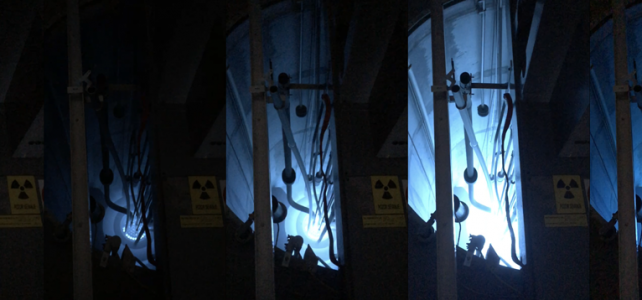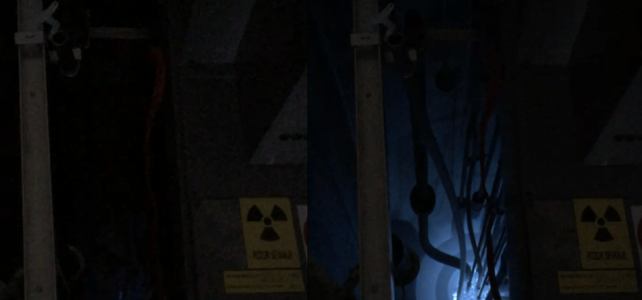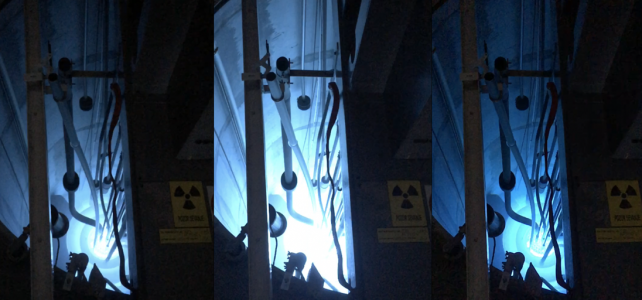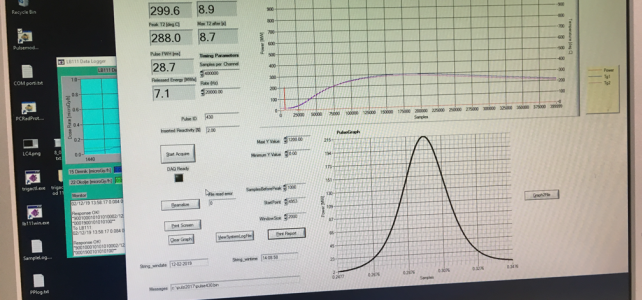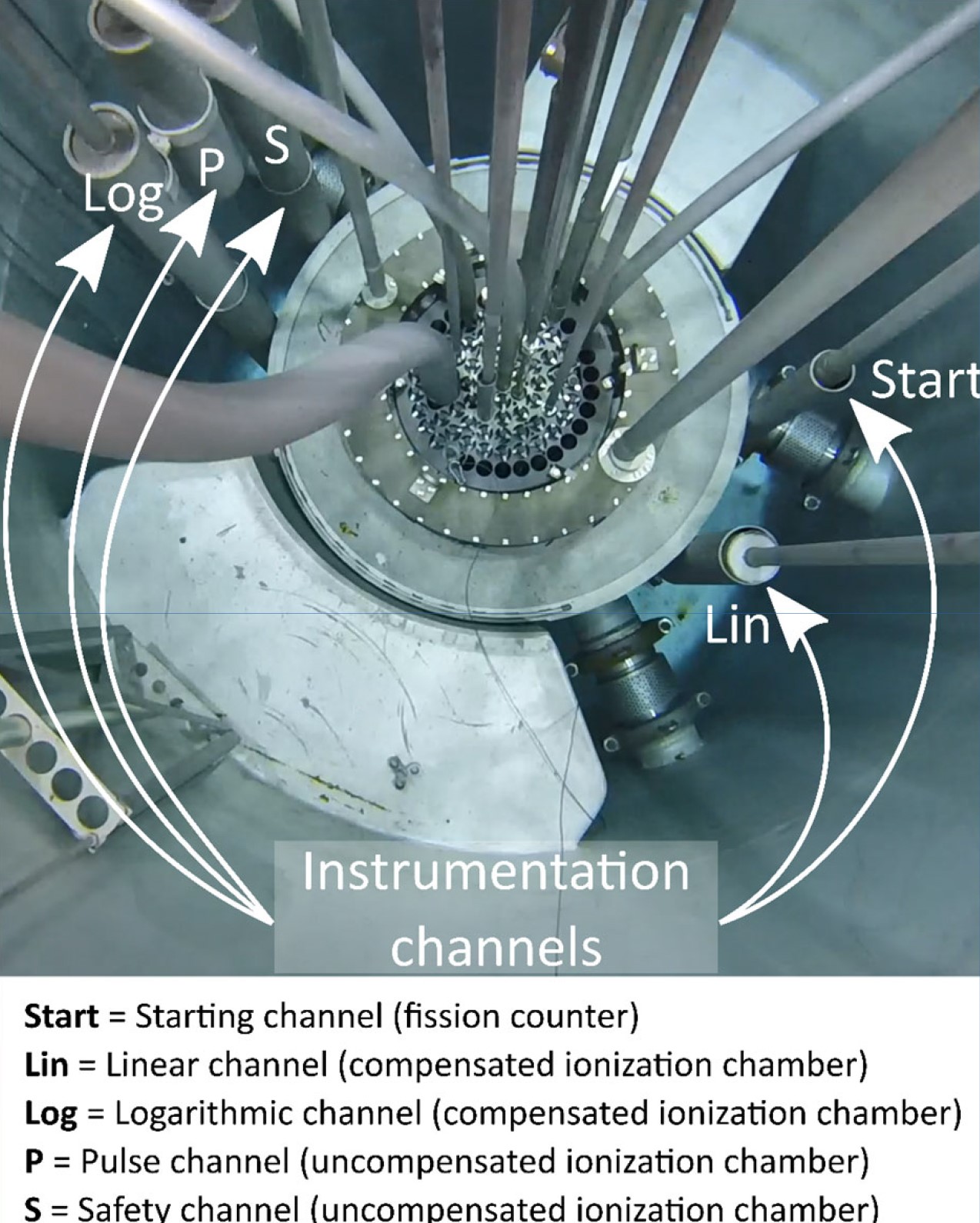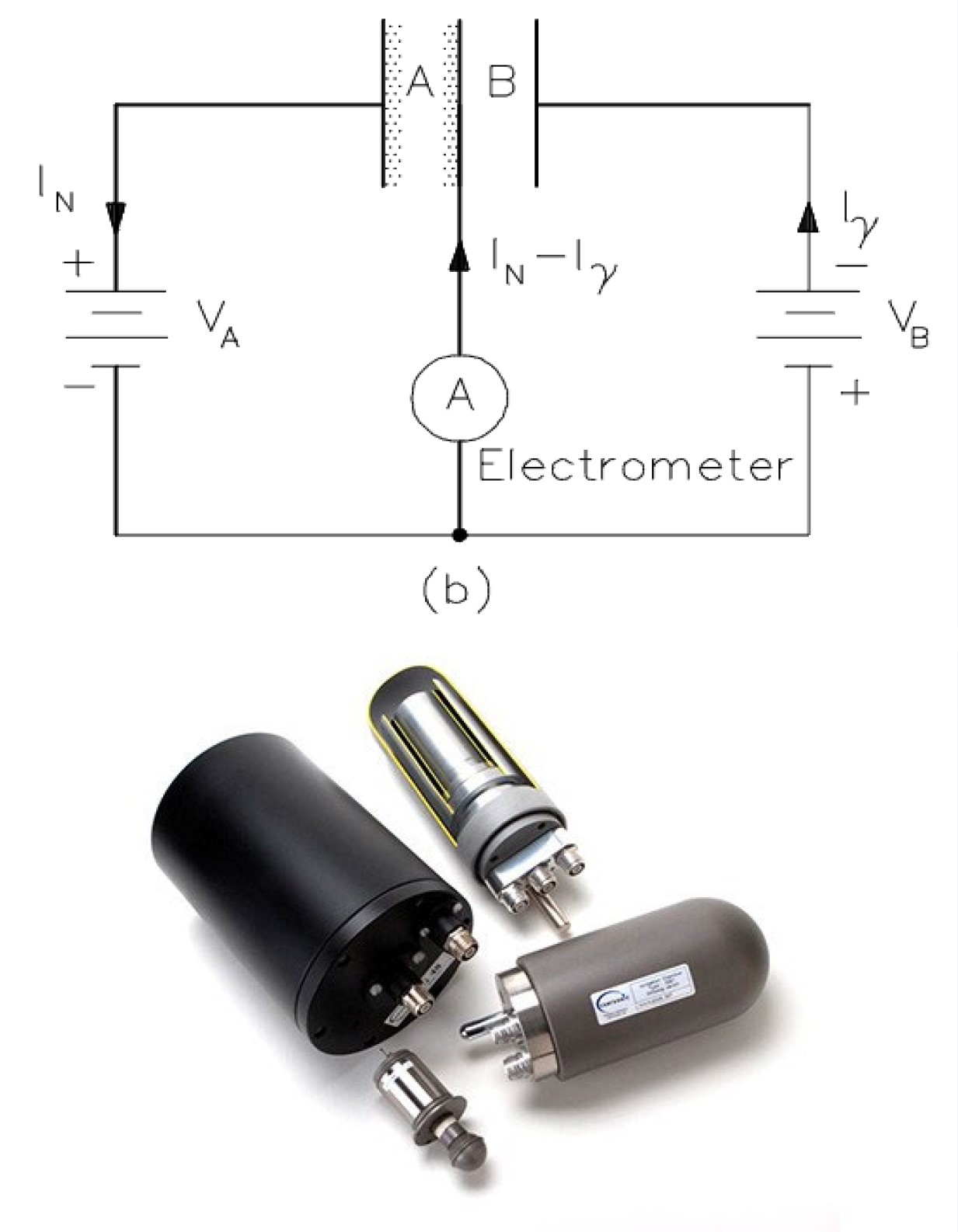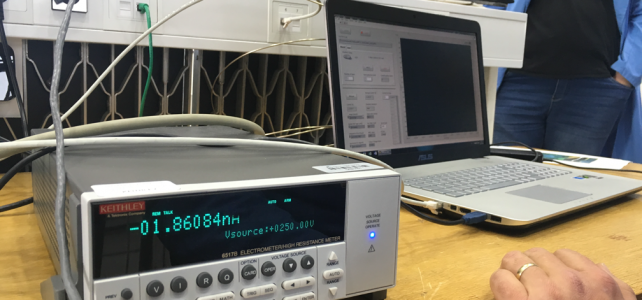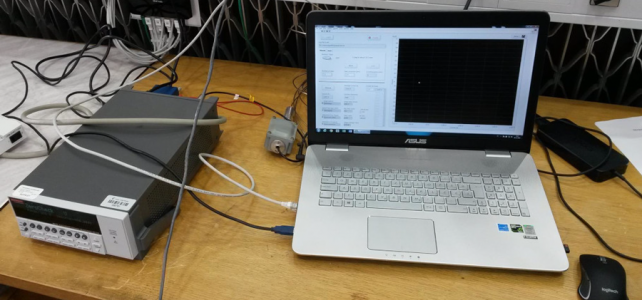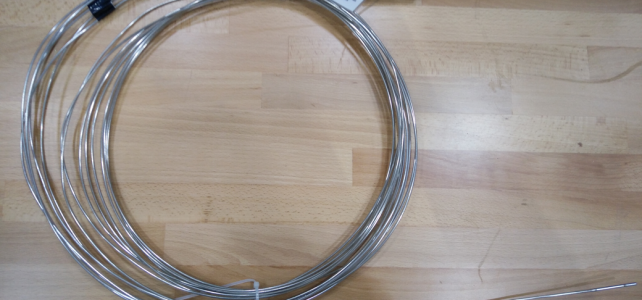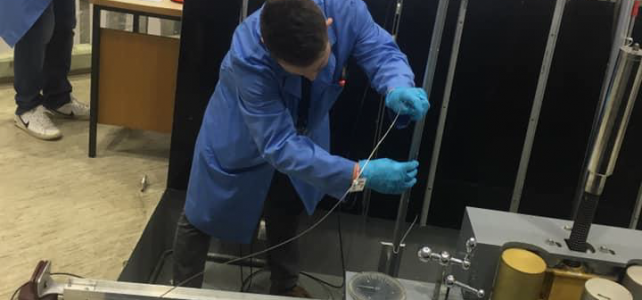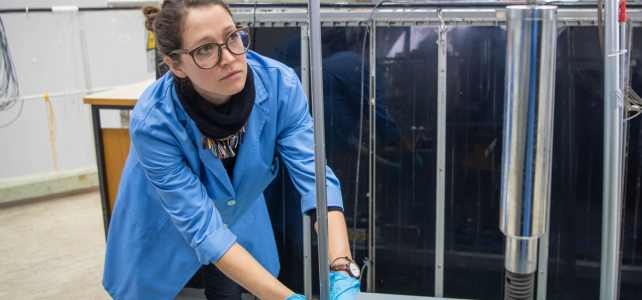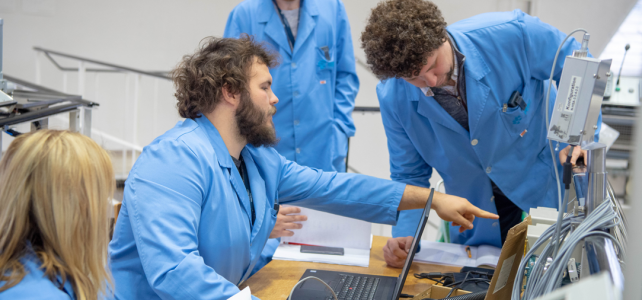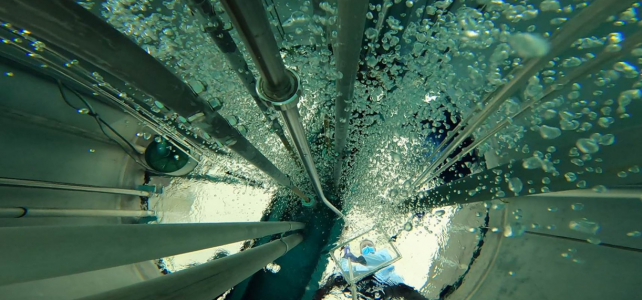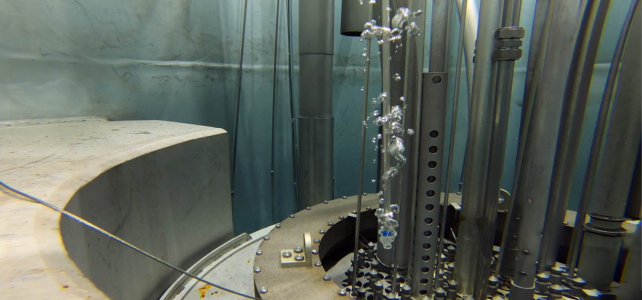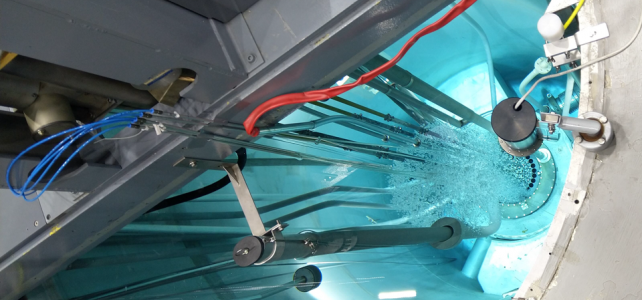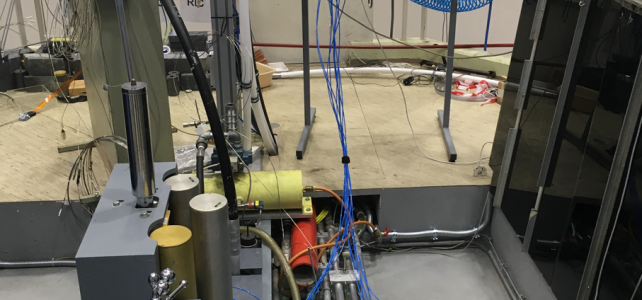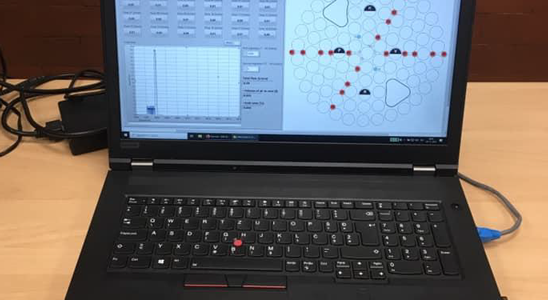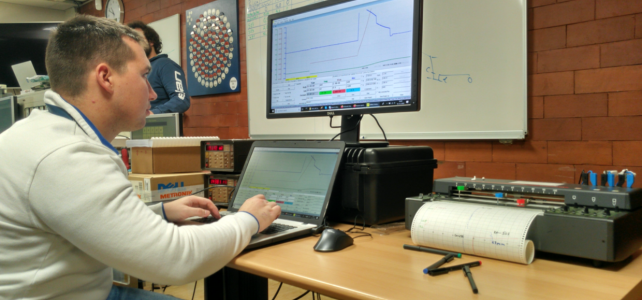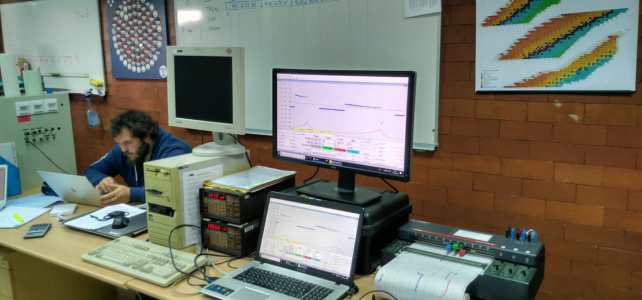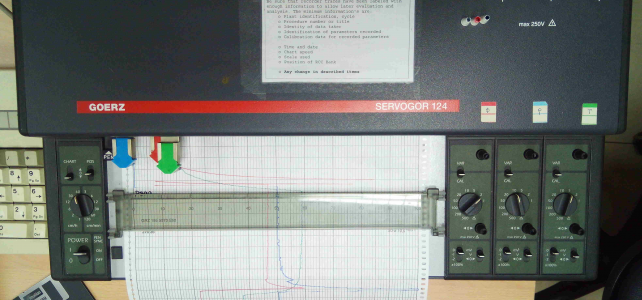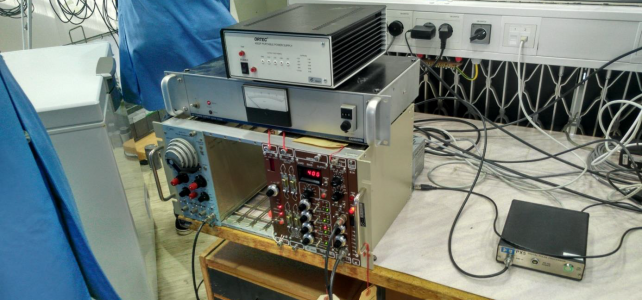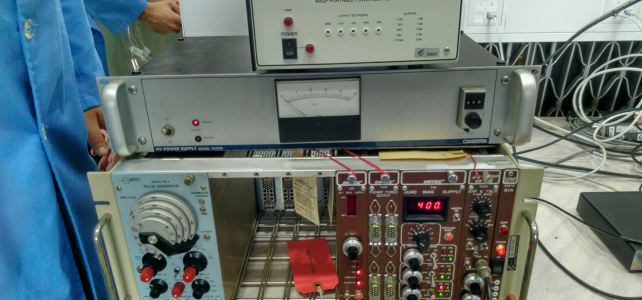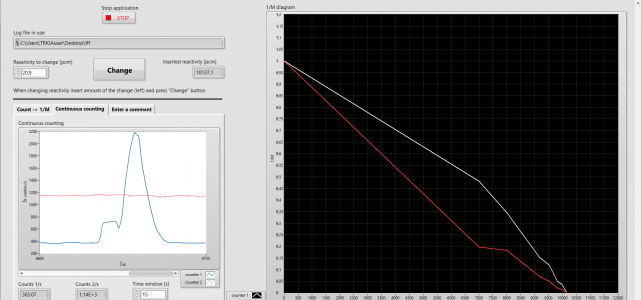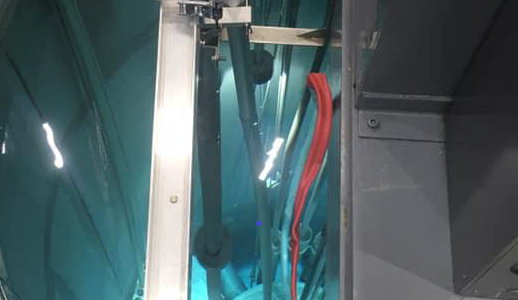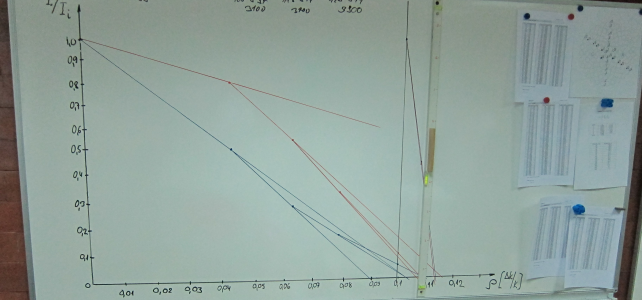Purpose of experiment
The purpose of the experiment is familiarization with the construction and operation of compensated boron-lined ionization chambers, which are frequently used as nuclear instrumentation detectors. Basic principle of chamber compensation are explained and demonstrated practically in a mixed neutron and gamma radiation field. Measurements of compensated ionization chamber response linearity are performed at different degrees of compensation.
Outcome / What you will learn
Students will:
-
learn about the construction and operation of a gamma-compensated ionization chamber
-
experimentally determine the compensation voltage
-
test the linearity of chamber response at different degrees of compensation.
Execution
-
The construction and operation of a compensated ionization chamber is discussed.
-
Chamber compensation is demonstrated in the gamma radiation field in the reactor core at zero power.
-
The current vs. voltage characteristic is measured at different reactor power levels.
-
The chamber response linearity vs. reactor power is tested at different degrees of chamber compensation.

